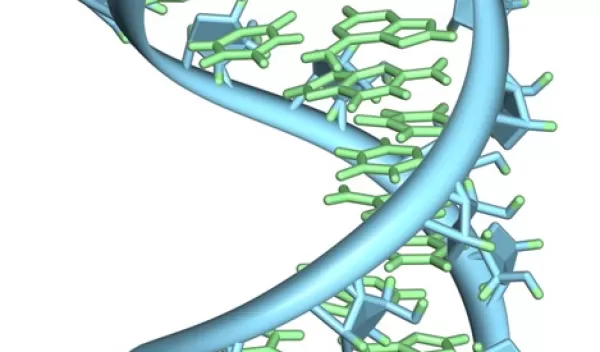
RNA molecules are masters of their own destinies
At any moment in the human body, in about 30 trillion cells, DNA is being "read" into molecules of messenger RNA, or mRNA, the intermediary step between DNA and proteins, in a process called transcription.
Scientists have a good idea of how transcription gets started. Proteins called RNA polymerases are recruited to specific regions of DNA molecules and begin skimming their way down the strand, synthesizing mRNA molecules as they go. But part of this process is less well-understood. How does the cell know when to stop transcribing?
Now, new U.S. National Science Foundation-funded work in the labs of Whitehead Institute biologist Richard Young, who is also affiliated with the Massachusetts Institute of Technology, and Arup Chakraborty, a chemical engineer and physicist at MIT, suggests that RNA molecules themselves are responsible for regulating their formation through a feedback loop. If there are too few RNA molecules, the cell initiates transcription to create more. Then, at a certain threshold, too many RNA molecules cause transcription to draw to a halt.
According to Manju Hingorani, a program director in NSF's Division of Molecular and Cellular Biosciences, the study is an example of how cross-disciplinary research, in this case between biologists and physicists, can yield unexpected insights into well-studied but still mysterious cellular processes. "The findings offer an elegant explanation for how cells control mRNA production," Hingorani said.
The researchers are optimistic that the new results could inform therapies for a wide range of diseases. In the last 10 years, a variety of drugs have been developed that directly target RNA successfully. "Understanding how RNA molecules regulate gene expression bridges the gap between gene dysregulation in disease and new therapeutic approaches that target RNA," Young said.
The research, published in the journal Cell, is a collaboration between biologists and physicists and provides insights into the potential roles of the thousands of RNAs that are not translated into proteins, called noncoding RNAs. Noncoding RNAs are common in mammals and have mystified scientists for decades.
Added Krastan Blagoev, a program director in NSF's Division of Physics, "The discovery that molecules inside cells self-organize to form units crucial for their function is one of the biggest discoveries in biology this century, and this work substantially furthers our knowledge in this area."


